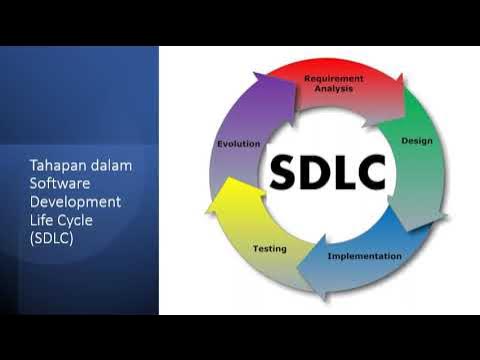2 - Memahami Stakeholders dan Aktivitas Rekayasa Kebutuhan
Summary
TLDRIn this software requirement analysis lecture, the importance of understanding stakeholders is emphasized. The session highlights the necessity of avoiding assumptions in software development and stresses the need for clear communication between developers and clients. It discusses the role of requirement development and management, emphasizing the collaboration between developers and stakeholders to ensure software meets customer needs. The lecture also introduces the concept of a project owner as a bridge between internal teams and external entities, crucial for successful project execution.
Takeaways
- 😀 The importance of understanding stakeholders in software development is emphasized, as it affects the alignment of software features with customer needs.
- 👨💻 The script discusses the common problem of developers assuming what the client needs without proper communication, leading to potential misalignment of software features.
- 🤝 Effective communication between the development team and stakeholders is highlighted as a key factor in accurately mapping out software requirements.
- 📝 The script outlines the process of requirement development and management, which includes activities like requirement analysis, documentation, and ensuring project timeliness.
- 🔍 The difference between 'requirements development' and 'requirements management' is explained, with the former focusing on analyzing and documenting business processes and the latter on managing project timelines and scope.
- 🏢 Stakeholders can be individuals, groups, or organizations that have an interest or are affected by the project's activities and decisions.
- 👨🏫 The script uses an analogy of a misunderstanding between a customer and a developer to illustrate the importance of clear communication in software development.
- 📈 The role of the project owner is introduced as a bridge between internal and external stakeholders, which is crucial for the project's success.
- 📚 The script mentions the need for a good understanding of the client's business processes to design software that meets their needs.
- 📋 The importance of documentation in the software development process is stressed, as it serves as a guide for developers to build the application based on the specified requirements.
Q & A
What is the main topic discussed in the second meeting of the software requirement analysis and specification course?
-The main topic discussed is the importance of understanding stakeholders in the context of software development.
What is the expected learning outcome for the students after the second meeting?
-The expected learning outcome is for the students to be able to explain what stakeholders are and their significance in software development.
Why is it crucial to perform a repairman for an application?
-Performing a repairman is crucial as it determines the goals and requirements needed by the customer, and it helps in deciding whether the application meets the customer's expectations.
What is the common problem that arises between developers and customers according to the script?
-The common problem is that developers often assume what features the customer needs without verifying, leading to potential misunderstandings and undesired features.
What does the script suggest as a key factor in ensuring that software development meets customer needs?
-The script suggests that good communication between the development team and stakeholders is a key factor in accurately mapping out the requirements needed for software development.
What are the two main activities in the requirement engineering phase as mentioned in the script?
-The two main activities in the requirement engineering phase are requirement development and requirement management.
What is the purpose of requirement development in the context of the script?
-Requirement development involves activities for analyzing and exploring requirements that will be documented and used for development by the developers.
What is the role of requirement management in the software development process?
-Requirement management ensures that the project is completed on time and according to the plan, managing the requirements to keep them up to date.
What is the difference between requirement development and requirement management as per the script?
-Requirement development focuses on creating documents that define the business processes and rules, while requirement management deals with ensuring the project's success by managing these requirements effectively.
Who are the stakeholders involved in the application discussed in the script?
-The stakeholders involved include external parties like staff, lecturers, and students, as well as internal parties like project managers, developers, business analysts, and the project owner.
Why is it important to identify all stakeholders before starting the development process?
-Identifying all stakeholders is important to ensure that the application can meet the needs of all involved parties and to facilitate effective communication among them.
Outlines

Esta sección está disponible solo para usuarios con suscripción. Por favor, mejora tu plan para acceder a esta parte.
Mejorar ahoraMindmap

Esta sección está disponible solo para usuarios con suscripción. Por favor, mejora tu plan para acceder a esta parte.
Mejorar ahoraKeywords

Esta sección está disponible solo para usuarios con suscripción. Por favor, mejora tu plan para acceder a esta parte.
Mejorar ahoraHighlights

Esta sección está disponible solo para usuarios con suscripción. Por favor, mejora tu plan para acceder a esta parte.
Mejorar ahoraTranscripts

Esta sección está disponible solo para usuarios con suscripción. Por favor, mejora tu plan para acceder a esta parte.
Mejorar ahoraVer Más Videos Relacionados

1 - Pengenalan Analisis dan Spesifikasi Rekayasa kebutuhan

Pengantar Rekayasa Perangkat Lunak (Software Engineering)

7 - Requirement Elicitation: Part 2 Indirect Elicitation

5 - Visi dan Cakupan Proyek Perangkat Lunak

Belajar Rekayasa Perangkat Lunak | 3. Konsep Pemodelan

[MEET 9] AKUNTANSI EKUITAS & PELAPORAN KEUANGAN - PERUBAHAN AKUNTANSI & ANALISIS KESALAHAN
5.0 / 5 (0 votes)
